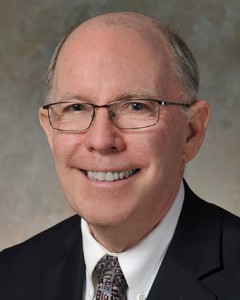
The issues impacting the real estate markets as discussed at the Spring CRE meeting - by Bill Norton

A few weeks ago, I was in downtown Los Angeles attending the Spring CRE meeting. These meetings are always good and often great. Interesting topics, good presenters and lots of conversation with fellow CRE’s from all over. Practicing north of Boston, not in a secondary, but a tertiary market, means discussions of global capital flows, pension fund and insurance company investments, life-style center development, urban transit, and true mixed-use development is interesting, but not impactful on our day-to-day activities. Nonetheless, I find the topics fascinating and I come home inspired and energized. Two recent examples are the impact of drones on our work, especially due diligence (such as roof inspections, seasonal flooding, hourly car counts in parking lots….) and demographics. Chris Porter, VP and chief demographer from John Burns Real Estate Consulting in the Pacific Northwest, had a terrific presentation on different age groups. Not all Millennials are the same! In fact, what he has done is break down the population into 10 year age cohorts – very interesting and very telling – look for their new book Big Shifts Coming. With the advent of Big Data – it is overwhelming, confusing, misleading, but can be fascinating. In 2016 (I think) there were 4 million births, but only 2.6 million deaths; 2.2 million marriages, but 1 million divorces. We have “lost” 260 million population here in the U.S. since 1975, due to birth control (smaller household size, families starting later…).
A big product of the CRE’s Spring meeting is the CRE top 10 list of issues that are impacting the real estate markets. I sat through nearly a three-hour session where the CRE’s in attendance debated the issues along with their impact and priority.
Number 1 was Political Polarization and Global Uncertainty. President Donald Trump (who knew?), Brexit, France’s election, the U.S. withdrawing from, or at least backing away from the Paris Climate Accord… real estate investors hate uncertainty. Commercial real estate is not a liquid investment, it is mostly held for long-term stability and steady returns.
Number 3 was Generational Disruption “where Boomers and Millennials” divergent views of where to live, work and play increasingly impact property markets. One outcome is the evolving of “su-burbs” – which are suburbs desperately trying to gain an urban feel with walkable downtowns, mixed-use and public transit options.
Number 4 was Retail Disruption. The U.S. has been over-retailed for years (25 - 28 s/f of retail per person!) v. 2 to 4 s/f per person in Europe, 40% higher than Canada, 5x the United Kingdom and 10x Germany….. By one count, there is over 1.1 billion s/f of excess retail space in the U.S. I wonder what it will turn in to?
Number 5 was Infrastructure Investment. Everyone agrees we need it, but few can agree on how we are going to pay for it. I favor an “Infrastructure Bank” funded by 3%, 30-year tax-exempt (at federal and state levels) bonds sold to those over 55 years old. The need is more than roads and bridges - airports, ports, railroad, water, sewer, parks….
Number 7 was Lost Decades of the Middle Class. Middle class incomes have yet to recover their pre-recession highs ($57,403 medium income in 2007) and are actually hovering below inflation-adjusted levels from almost two decades ago ($57,909)!
More on this in a future column(s). Closer to home, Ken Entenmann, CFA and CIO of NBT Bank, spoke at the Manchester Country Club to about 200 gathered by NBT Bank to hear his comments. Globally there are headwinds - the drop in oil prices globally, China’s drop-in growth rate, Brexit and the Trump election. Tax reform is hard. It took Ronald Reagan (far more popular and confident in politicking then Mr. Trump) six years to get tax reform (BN’s comment: Mr. Trump may not last one or two years, never mind six)!
Debt, private and public, is looming. We currently have near-record low interest rates but still national debt interest payments exceed $260 billion per year! If interest rates rise, that figure could be $600 - $700 billion per year!!
Regulations dampen investment and often efficiencies, but rolling them back is not easy. The ACA, Dodd-Frank, Sarbanes-Oxley, NAFTA…
Infrastructure takes time – big projects are not “shovel ready.” Ken cited the new Tappan Zee Bridge where it took two years to build the special cranes to lift the spans into place.
Workforce issues – aging, skills and education, immigration. In 1938, there were 7 people working for everyone scheduled to receive Social Security benefits. Today (2017), it is 2 working for every recipient.
Bottom line: Except for a Black Swan event, interest rates will move up some but not above 3% for the FED Funds rate. Inflation will continue between 1½% - 3% (depending on what you count and what you don’t). The stock market is fully (or nearly) fully valued. Price/earning ratios are strong historically. We need to get corporations investing and expanding again.
Lots to think about!
Bill Norton, CRE, FMA, Hon. AIA NH, is a principal of Harrington & Reeves, Manchester, N.H.